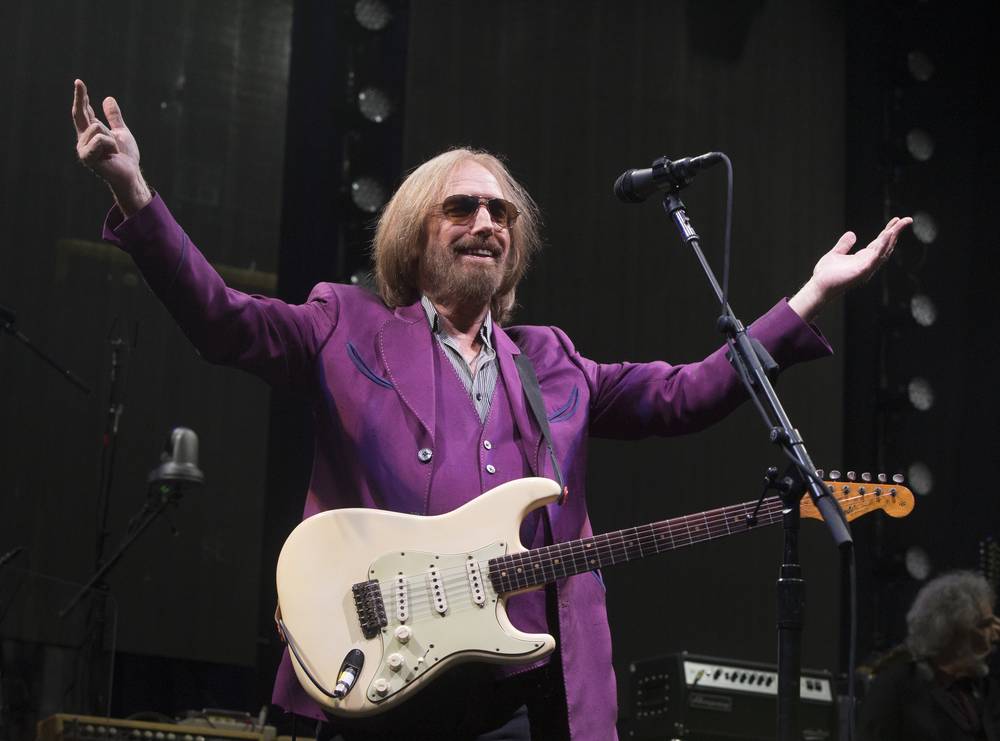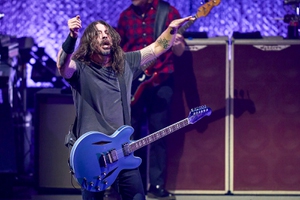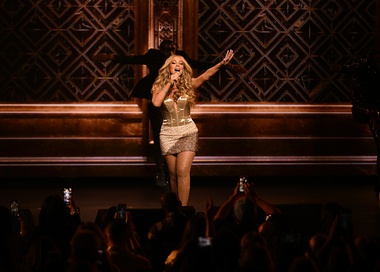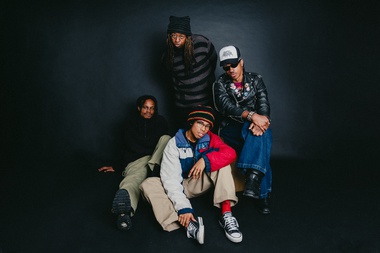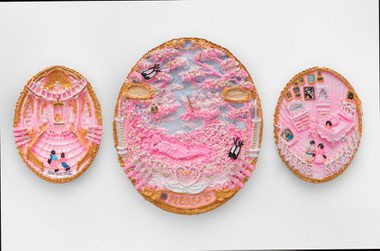Last Christmas, my partner gave me Total Excess, a book of photographs by Michael Zagaris. It’s a pretty uninspiring collection of stock-quality rock photos, but one picture made me linger: Tom Petty, on the balcony of San Francisco’s Miyako Hotel in the late ’70s. He’s leaning against the wall and throwing some hip, thumbs hooked on the waistband of his skinny jeans. That feathery hair is caught perfectly the breeze, and that singular mouth—that rubbery, Cheshire maw—looks loaded and primed for damage. What struck me most, though, wasn’t the image’s colossal coolness. It’s that, somehow, I’d forgotten Petty was a total badass.
When Petty died suddenly earlier this week, we were all caught off-guard, and not just by the horrific news still unfolding from the night before. Along with the shock and the sadness, there was real guilt coursing through my Facebook feed, like we’d just lost an old friend we hadn’t called in years. We’d all had that moment with Damn the Torpedoes, but then Petty became the most consistent, unpretentious, least self-important rock star in history, and we noticed him a little less as time went on. “His music was everywhere,” one friend posted. “So I took him for granted.”
Looking back, he was never not there: the Stevie Nicks duet (“Stop Dragging My Heart Around”), the string of MTV classics (have Gen-Xers ever truly recovered from the cake-cutting moment in “Don’t Come Around Here No More”?), the Dylan tours, the Traveling Wilburys, the mega-selling omnipresence of Full Moon Fever, his first album sans Heartbreakers. “American Girl” turned evergreen, scoring everything from Fast Time at Ridgemont High to Silence of the Lambs. It also inspired “Last Nite,” the first single from The Strokes, who earned Petty’s respect by admitting they’d flat ripped it off. “That made me laugh out loud,” Petty told Rolling Stone. “I was like, ‘OK, good for you.’”
If Petty’s influences are easy to trace—since I didn’t really listen to The Byrds until 1990, you can understand why my initial reaction was, “They sound just like Tom Petty!”—pinpointing his influence on others is trickier, just because it’s so vast. The ’90s oozed with Petty-ites. The Gin Blossoms and Soul Asylum. Sheryl Crow and Kid Rock. Don’t forget Lucinda Williams and Ryan Adams and their alt-country ilk, just about everything that’s come out of Nashville in the past two decades, the very existence of The War on Drugs. Even punks like Paul Westerberg tipped their hats. Before R.E.M. became the epitome of crossover integrity, Petty proved you could make silly videos and have massive radio hits without selling your soul. It helped that he didn’t take himself too seriously. Anyone who watched The Larry Sanders Show knew Petty had a great sense of humor.
Back in 1979, when Zagaris went to photograph Petty for Rolling Stone, he brought along a portfolio of other acts he’d shot: the Stones, The Who, Lou Reed, Zeppelin, Bowie, Clapton, Dylan. While looking through it, Petty said, “Wow, hopefully someday we’ll be in there, too.” It goes without saying that Petty earned his seat in the pantheon. You’ve probably got a Petty tune stuck in your head right now. And if the man’s badass-ness slips your mind, that’s okay. Petty didn’t want us calling him a badass, anyway. Which, of course, only made him more of one.
